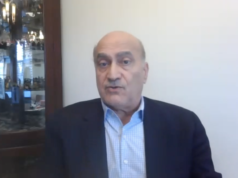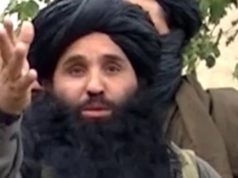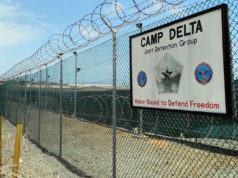“When people see a strong horse and a weak horse, by nature they will like the strong horse.”
– Osama bin Laden in the wake of the 9/11 attacks.
Justice has been served. On Sunday, May 1, news broke and President Obama confirmed that the United States killed Osama bin Laden in a mansion in Pakistan. The death of the al-Qaeda leader and world’s most wanted terrorist is a great victory for the United States and a terrific accomplishment by the U.S. intelligence community and American military forces.
How it happened
Unbeknown to Americans and the international community, the operation to kill Osama bin Laden under President Obama commenced nearly two years ago. On June 2, 2009, the president signed a memo to CIA Director Leon Panetta ordering “a detailed operation plan for locating and bringing to justice Osama bin Laden.” It took over one year for any significant lead to come in, but in August 2010, the CIA located the residence of one of bin Laden’s trusted couriers. With a compound so large and guarded, intelligence officials believed that a top al-Qaeda member, if not bin Laden himself, was living in the house. After analyzing the area, by September 2010, the CIA had decided that there was a “strong possibility” that bin Laden was hiding there.
By February 2011, after months of intelligence gathering, officials on the case decided to pursue their target. President Obama convened a series of high-level meetings over the next two months with top national security leaders to develop a course of action. Events began to unfold, and quickly, as soon as Obama authorized the operation at 8:20 a.m. on Friday, April 29. By Sunday, a “small team” of special forces was in Pakistan and ready for the raid. At 2 p.m., Obama met with his national security team to review final preparations and at at 7:01, the president was told there was a “high probability” that bin Laden was killed.
The actual operation took place at 3:30 p.m. ET, carried out by U.S. Navy Seal commandos. After raiding the compound, there was 40 minutes of fighting, within which bin Laden, two couriers, and one of bin Laden’s adult sons were killed. A woman used as a shield by one of the male members of al-Qaeda was also killed. The U.S. used “multiple methods,” including DNA testing, to identify bin Laden’s remains before burying his body at sea.
The New York Times reported that the information on bin Laden’s courier that led to his compound and the al-Qaeda leader’s death was derived from interrogating Guantanamo Bay detainees. According to Marc Thiessen of the American Enterprise Institute, those detainees were Khalid Sheikh Mohammed (KSM) and his successor, Abu Faraj al-Libi, and the courier’s name was disclosed after using enhanced interrogation techniques – techniques the Obama administration banned the CIA from using. If Thiessen’s statement proves true, not only would bin Laden’s death be a feather in Obama’s cap, but former President Bush’s as well for instituting those techniques.
The Pakistani problem
At his time of capture yesterday, bin Laden was living in the Pakistani town of Abbottabad, an affluent area approximately 40 miles outside of Pakistan’s capital of Islamabad. His compound, worth an estimated $1 million and built in 2005, was highly suspicious to U.S. intelligence officials. According to one, the house was “custom built to hide someone of significance.” Indeed, it was surrounded by walls as high as 18 feet and topped with barbed wire; a third-floor terrace was shielded by a 7-foot privacy wall. The only entrance into the grounds was guarded by two security gates, and the property was not connected to phone lines or the Internet. Furthermore, the residents burned their garbage rather than put it out for collection.
With a population of 120,000, the town is home to the prestigious Kakul military academy, largely considered the West Point of Pakistan. Kakul produces the country’s top military commanders, and is a popular retirement place for officers in the Pakistani army. Literally, Osama bin Laden was hiding in plain sight and under the Pakistani military’s nose.
Bin Laden’s location in this town, however, raises the question of whether the Pakistani military or intelligence service was aware of, if not aiding, the terrorist mastermind. It has long been the suspicion that Pakistan’s intelligence agency, Inter-Services Intelligence (ISI), aids the Taliban and other insurgents in Afghanistan fighting the United States and the Coalition, perhaps even al-Qaeda itself. In addition, while Islamabad has been generally cooperative in assisting the U.S. in combating terrorists, the Pakistani army has also been accused of sympathizing with the Taliban.
Tellingly, countless al-Qaeda operatives have been arrested or killed while hiding in Pakistan: 9/11 co-conspirator Ramzi Bin al Shibh in 2002; 9/11 mastermind Khalid Sheikh Mohammed in 2003; key al-Qaeda operative Majid Khan in 2003; KSM’s nephew and top aid, Abd al Aziz Ali, in 2003; Ahmed Khalfan Ghailani, connected to the 1998 bombings of U.S. embassies in East Africa, in 2004; KSM’s successor, Abu Faraj al Libbi, in 2005; jihadist lecturer and ideological mentor Abu Musab al-Suri in 2005; and Mustafa Abu al-Yazid, al-Qaeda’s number 3 leader, killed in 2010, among many others. Washington did not notify Pakistan prior to conducting Sunday’s operation against bin Laden.
The problem with Pakistan should come as little surprise. Pakistan has acted as the epicenter of global terrorism since 9/11. According to Paul Cruickshank of the New York University’s Center on Law and Security, “In a majority of the serious terrorist plots against the homelands of Western countries since 2004, plotters were either directed or trained by established jihadist groups in the Afghanistan-Pakistan border region.” Cruickshank estimates that eight major plots have been directed from Pakistan and 11 involved militants who received training there.
What it means and looking ahead
What Osama bin Laden’s death means to the United States, the families of 9/11 victims, and much of the free world cannot be underestimated. It closes a painful chapter and helps to heal the wounds created by the most vicious terrorist attack against the U.S. in American history. But Islamic terrorism is not just about a person – it is the result of a murderous ideology. Al-Qaeda today is not the al-Qaeda of 2001. Bin Laden went from being the head of one of many terrorist groups to being the ideological leader of a jihadist movement that spawned many new groups that operated without his direction. Al-Qaeda’s affiliates include its North African and Persian Gulf franchise, AQIM and AQAP, the Kashmiri separatist groups Lashkar-e-Taiba and Jaish-e-Muhammad, Abu Sayyad in the Philippines, and Indonesia’s Jemaah Islamiyah. As American Foreign Policy Council expert, Ilan Berman, points out, the networks inspired by bin Laden will not disappear with his death; they will continue to pose a threat to American interests and those of its allies.
The United States has devoted remarkably few assets to winning the war of ideas against radical Islam and this needs to change because the struggle is about ideas, not personalities. The Global War on Terror must continue – whether or not it is named as such – and the U.S. needs to redouble its efforts and devise new forward-leaning strategies to combat radical Islam.





